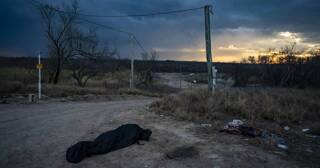Wingnut Anti Gay Mayor in Troy Turns down Millions from Feds
I suspect that there will be more to come in this story as the stimulus dollars and jobs for the transport hub go to a different city.
The terminal, which would help Troy become a transportation node on an upgraded Detroit-to-Chicago Amtrak line, was hailed by supporters as a way to create jobs and to spur economic development. But federal money is federal money, so with the urging of the new mayor, who helped found the local Tea Party chapter, the City Council cast a 4-to-3 vote this week against granting a crucial contract, sending the project into limbo.
¶ “There’s nothing free about government money,” Mayor Janice Daniels said in an interview. “It’s never free, and it’s crippling our way of life.”
¶ Other Republican officeholders have said “Thanks, but no thanks” to federal money for high-speed rail: Gov. Scott Walker of Wisconsin rejected an $810 million federal grant to extend passenger rail from Milwaukee to Madison; Gov. Chris Christie of New Jersey killed a project to dig a new commuter rail tunnel under the Hudson River. But those actions have generally involved criticism of the underlying logic of the projects, or projections of enormous costs to be borne down the line by state and local governments.
¶ The Troy transit center’s construction, by comparison, required no local contribution, and its predicted annual maintenance cost of $31,000 was, in the context of the city’s $50 million budget, “de minimis,” said Mark Miller, the assistant city manager.
¶ The federal government’s largess is no reason to build the transit center when the national debt stands at $15 trillion, Mayor Daniels said.
¶ Yet if the money does not go to Troy, it will not be used to pay down the national debt; it will be redirected to other projects around the country.
¶ Taking Tea Party reasoning to the local level has outraged supporters of the transit center, which has been in the works for a decade. Michele Hodges, the president of the Troy Chamber of Commerce, which supports the transit project, said that her organization “will be a pit bull for what’s best for this community.”
¶ David A. Kotwicki, a local lawyer, noted that members of Congress might talk tough on spending, but that they still bring projects home to their districts. The vote against the transit center, he said, looks like “cutting off your nose to spite your face.”
¶ Besides, he asked, “What if there’s a grant to provide 10 new police officers?”
¶ Michigan’s governor, Rick Snyder, a Republican, said through a spokeswoman that he was “disappointed” in the city’s decision and would be “reviewing our options for utilizing the grant, including the potential transfer of the grant to another applicant.” Mr. Snyder had sent a letter to Mayor Daniels before the vote saying that the project would have “significant, positive economic development on your community and the state.”
¶ The transit fight is not Mayor Daniels’s first brush with controversy. Earlier this month, it was revealed that she posted a message to her Facebook page last June, after New York State approved same-sex marriage, stating, “I think I am going to throw away my I Love New York carrying bag now that queers can get married there.” In an interview, she said she regretted the online comment.
I imagine the mayor’s narrow mind working through the problem with this logic: “If we put in high speed rail then some of those people might come through town - those other people are an existential threat to our {fundamentalist christian} way of life…” The mayor is a true tea zealot, someone who’s so immersed in tannic acid that she can’t see that the other tea party leaders just posture but then take the money and run.
Troy could be city the xenophobic narrator of Barrytown in from.













